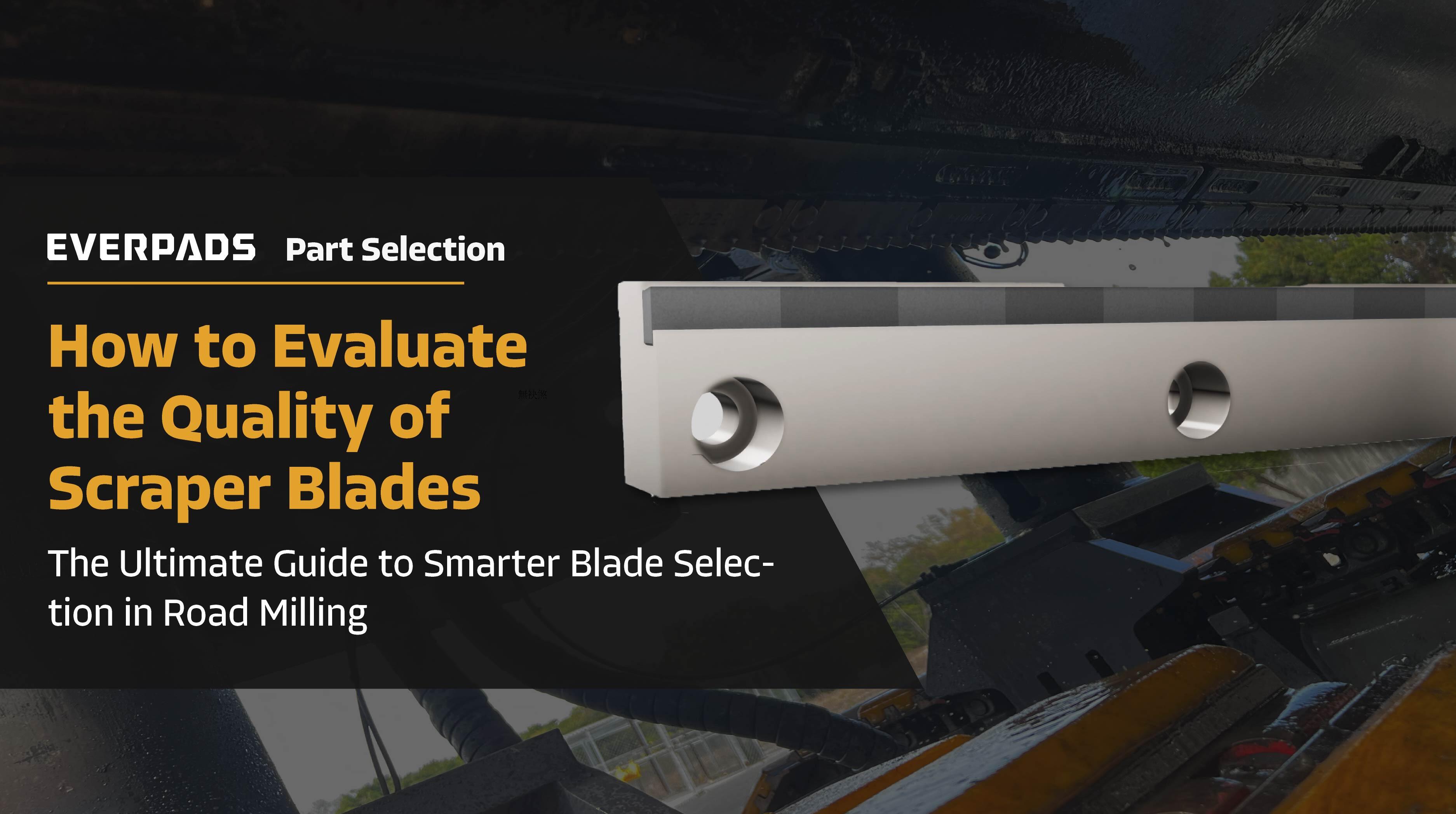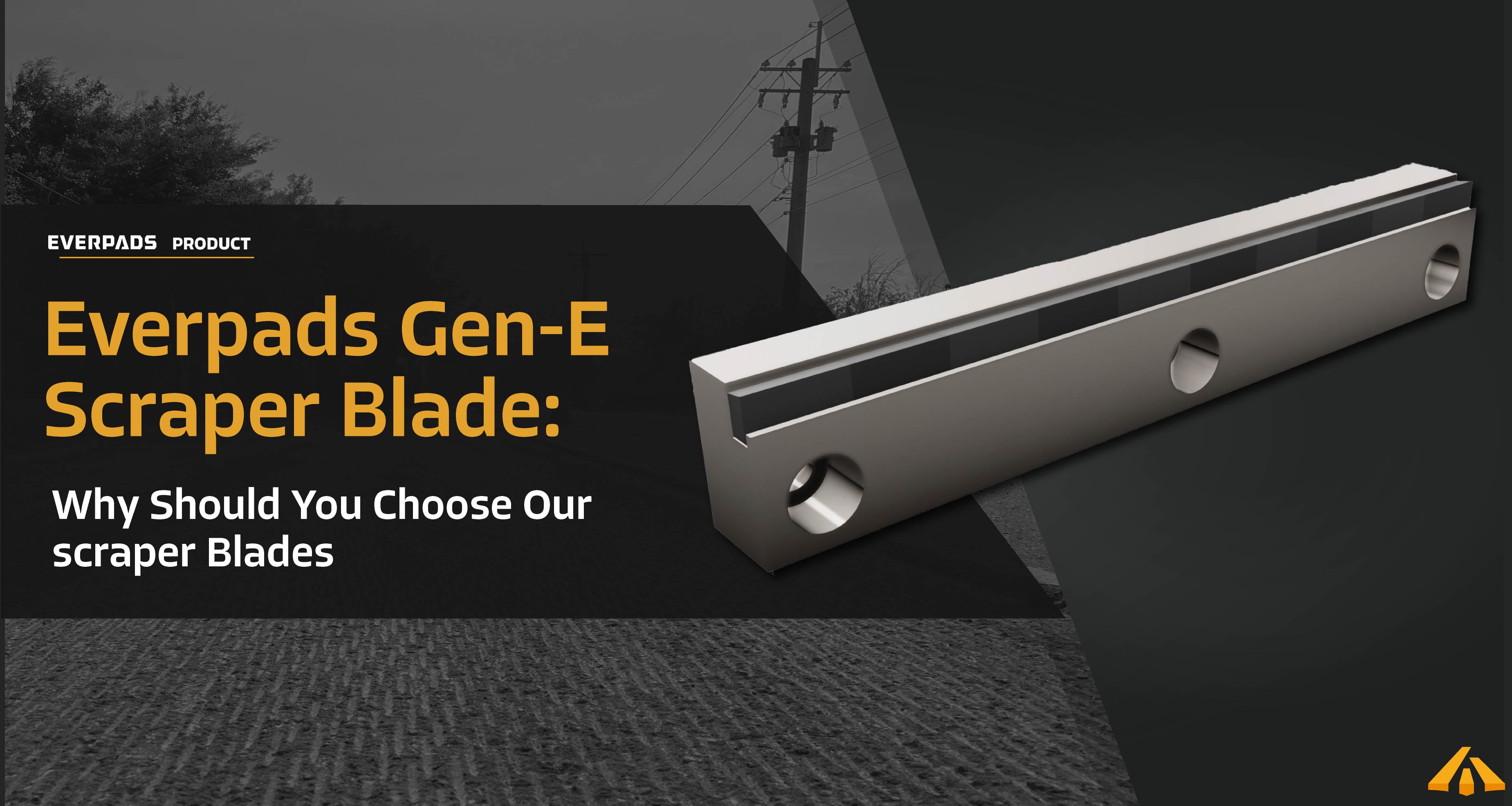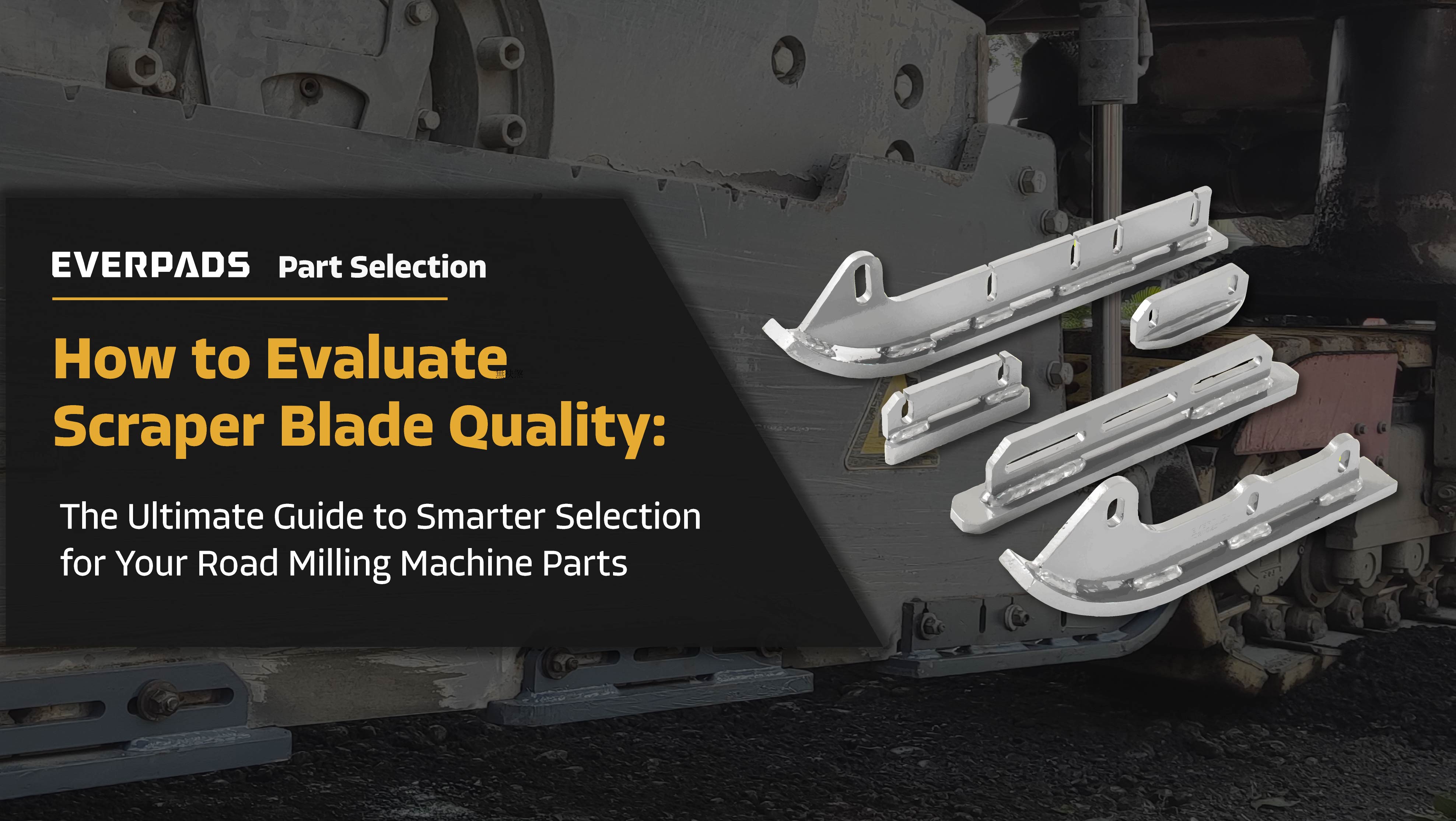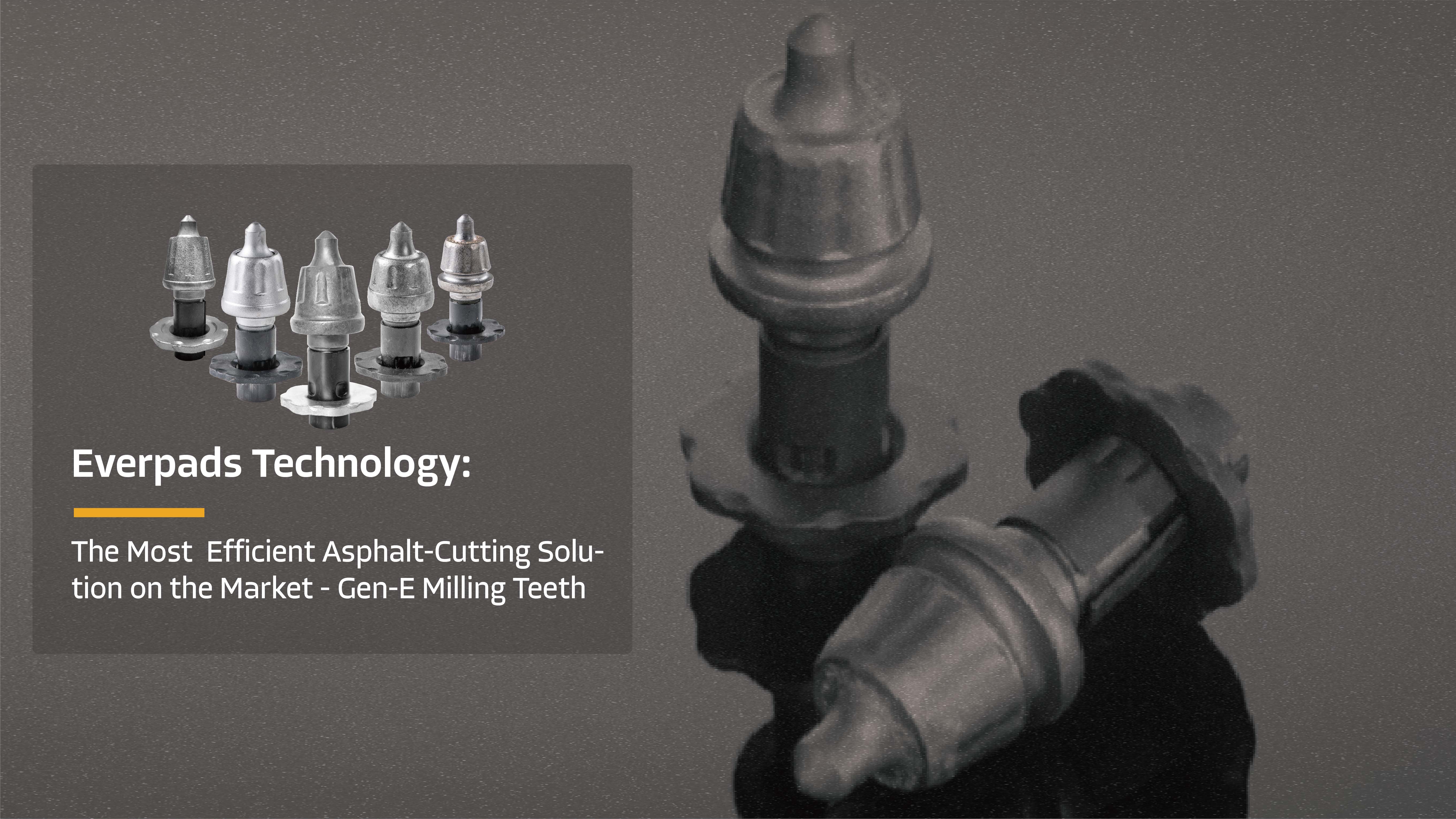Why Are Scraper Blades Important?
In cold milling operations, scraper blades do far more than just clean asphalt debris off the tracks. They play a critical role in ensuring machine stability, cutting accuracy, and overall jobsite efficiency.
By preventing material buildup underneath the machine, scraper blades help avoid misalignment, hydraulic overload, and undercarriage wear. When scraper blades perform well, they reduce downtime, extend machine life, and improve milling performance.
This article is for:
- Road milling contractors who want to avoid early blade failure and jobsite delays
- Field operators who deal with scraper installation and performance firsthand
- Procurement managers and buyers seeking reliable, cost-efficient products
By reading this article, you’ll:
- Learn how to identify weak designs that fail prematurely
- Gain practical criteria to assess blade specs and vendor claims
- Discover how to select products that reduce maintenance and maximize performance
I. What Functions Do Scraper Blades Serve?
- Protecting the Undercarriage – Prevent debris from lodging between the track and drive components, reducing friction and wear.
- Maintaining Cutting Depth Accuracy – Eliminate buildup that could affect the machine’s level and disrupt even surface removal.
- Reducing Hydraulic Load & Fuel Consumption – Less friction equals less effort for the drive system, leading to greater energy efficiency.
- Increasing Operational Safety & Stability – A stable machine is safer to operate and less likely to fail in the middle of critical work.
II. Common Pain Points of Scraper Blades
When selecting or using scraper blades, be aware of these two frequent issues:
- Tungsten Carbide Layer Detachment

- One of the most serious failures is when the entire piece of tungsten carbide detaches from the steel blade body. This can happen when the welding strength is poor, the bonding area is insufficient, or the design lacks a physical retention structure.
- As shown in the diagram above, repeated vibration and impact can cause the carbide to completely shear off. This results in immediate loss of wear protection and renders the blade ineffective for scraping operations.
- Edge Curling, Cracking, or Deformation

- This issue often arises when the tungsten carbide material used in the blade has poor metallurgical balance — either too brittle or too soft — due to substandard materials or improper manufacturing processes.
- The result is deformation or cracking under pressure, which compromises scraping precision and reduces blade life dramatically.
These issues typically stem from poor structural design, lack of reinforcement, or low welding standards.
III. What Determines the Lifespan of a Scraper Blade?
- Tungsten Carbide Wear Volume
- The usable usage thickness of the carbide layer directly affects how long the blade can endure wear before performance degrades.
- Carbide Overlay Hardness and Thickness
- Premium overlays should offer both high hardness and strong adhesion. An optimal thickness allows for extended abrasion resistance without premature failure.
- Resistance to Premature Failure
- i. Anti-Delamination Ability: The tungsten carbide must be properly bonded with a buffer layer between it and the body, and further supported by a physical retention design on the blade body to prevent the entire layer from peeling or shearing off.
- ii. Crack and Fracture Resistance: The hardness and wear resistance of the tungsten carbide layer are critical—but these must be carefully balanced with sufficient elasticity. Without this balance, the blade may crack or deform under impact, leading to premature failure.
A truly durable scraper blade must offer not just wear resistance—but also shock absorption, vibration resistance, and structural integrity.
IV. How to Design a High-Quality Scraper Blade – and How to Evaluate One
A high-performance scraper blade should deliver reliable performance under real-world jobsite conditions. That requires smart design in four key areas:- Material Composition
- Wear surface made from high-grade tungsten carbide for superior wear resistance and thermal stability.
- Blade body forged from high-strength alloy steel to provide rigidity and base durability.
- Geometric Design
- Ideal blade-ground contact angle between 40°–60° for maximum efficiency.
- Proper shape and width to match the track base without interfering with rollers.
- Edge and Underside Protection for Carbide Falls
- Protective structures — adding steel structure wraps or buffer reinforcements — should be integrated around the edges and underside of the tungsten carbide layer.
- These barriers are designed to minimize the risk of carbide detachment by physically retaining the carbide in place, especially under impact and vibration during operation.
- Field Maintenance and Replaceability
- Modular structures and universal bolt patterns enable quick onsite replacement with standard tools.
👀 How to Evaluate a Scraper Blade:
- Has the carbide wear layer been specially enhanced with added thickness?
- Does it have strong edge and underside protection designs to prevent carbide detachment?
- Does the blade maintain full contact and clean scraping across the track?
- Does the blade resist warping or cracking under heavy vibration?
- Is it easy and fast to replace in the field with minimal downtime?
Available Designs for Edge and Underside Protection for Carbide Falls

- Advantage: Offers strong protection against tungsten carbide detachment.
- Disadvantage: Provides less usable wear volume compared to Type 2 with the same carbide size. The steel protection structure may interfere with milling performance during the initial wear phase.

- Advantage: Maximizes wear volume due to full exposure of carbide—greater efficiency per unit.
- Disadvantage: Offers weaker structural support, making the carbide more vulnerable to early detachment.

- Advantage: Combines the structural protection of Type 1 and the high wear volume of Type 2. Our design uses an optimized wrap that secures the carbide without compromising usable wear area, delivering both durability and long-lasting performance.
- How It Works: The protective wrap surrounding the carbide edge is positioned to block lateral impact forces that would otherwise push or shear the carbide outward. This physical barrier prevents the carbide from being dislodged in high-vibration environments, securing it firmly in place throughout operation.
V. Want to Explore more Excellent Design in Action? Check Out More Details of Everpads Scraper Blades
Everpads developed the Gen-E Scraper Blade to meet the critical performance demands of modern milling jobsites, where consistency, durability, and ease of maintenance directly impact productivity.- Up to 800 Working Hours: With premium-grade German tungsten carbide, our blades deliver extended tool life even under heavy-duty conditions.
- Sharpened Cutting Tips: Designed for smoother track contact and more efficient removal of asphalt ridges.
- Uniform Contact Geometry: Maintains full surface scraping without lifting or skipping, ensuring clean finishes.
- Superior Wear Resistance: Welded with advanced carbide composition to withstand abrasive and high-impact operations.
This blade is engineered not just to scrape — but to stay sharp, hold its form, and work longer. It reduces downtime, improves surface outcomes, and keeps operations moving smoothly under pressure.
.png?width=698&height=417&name=%E5%AE%98%E7%B6%B2logo%20(1).png)






